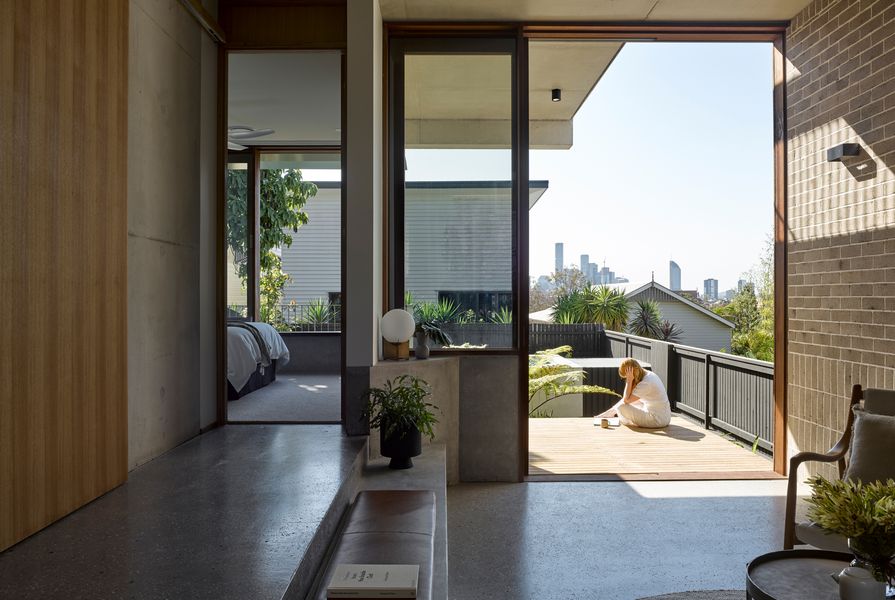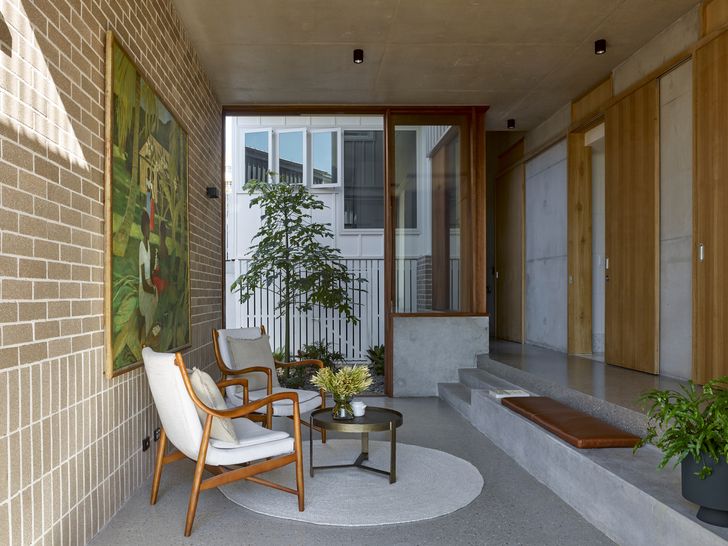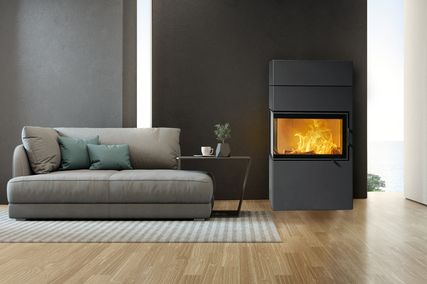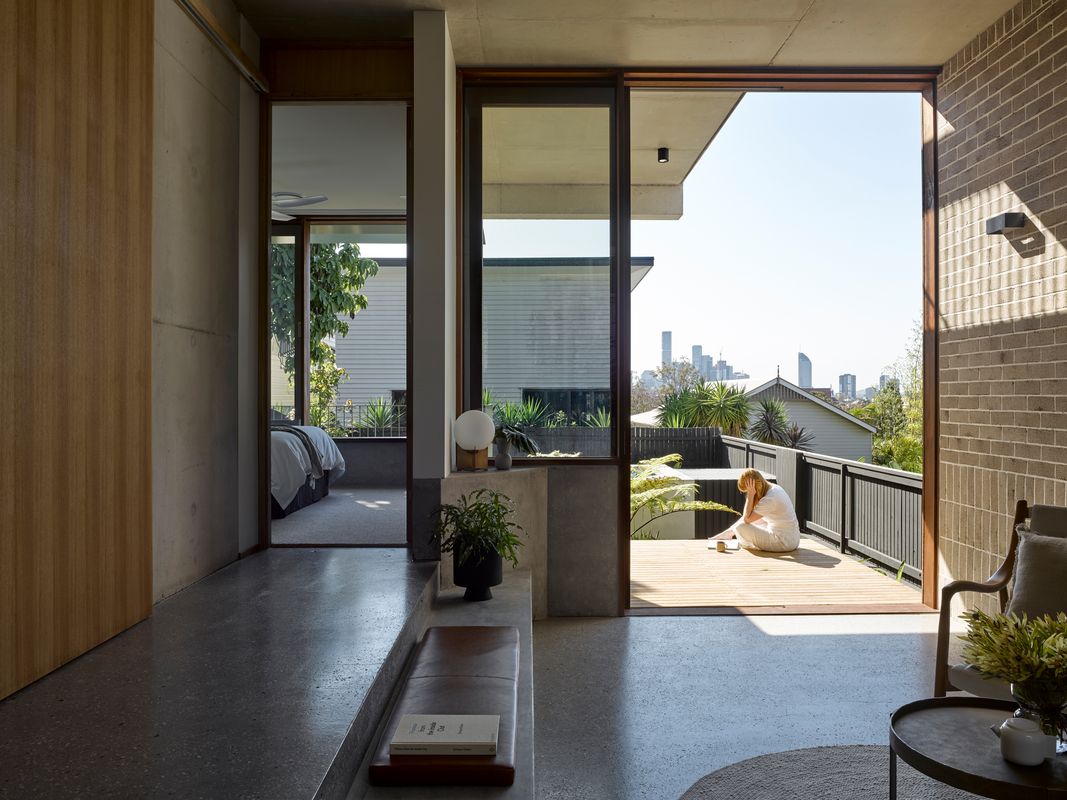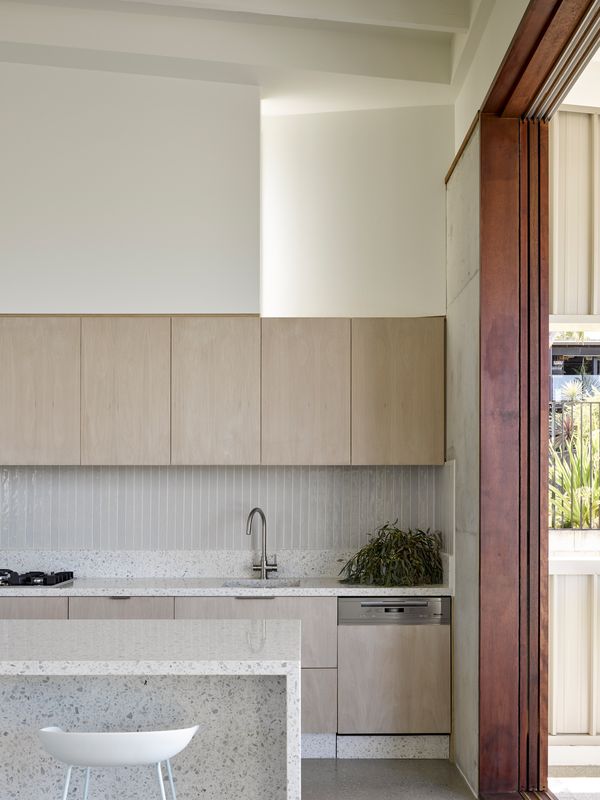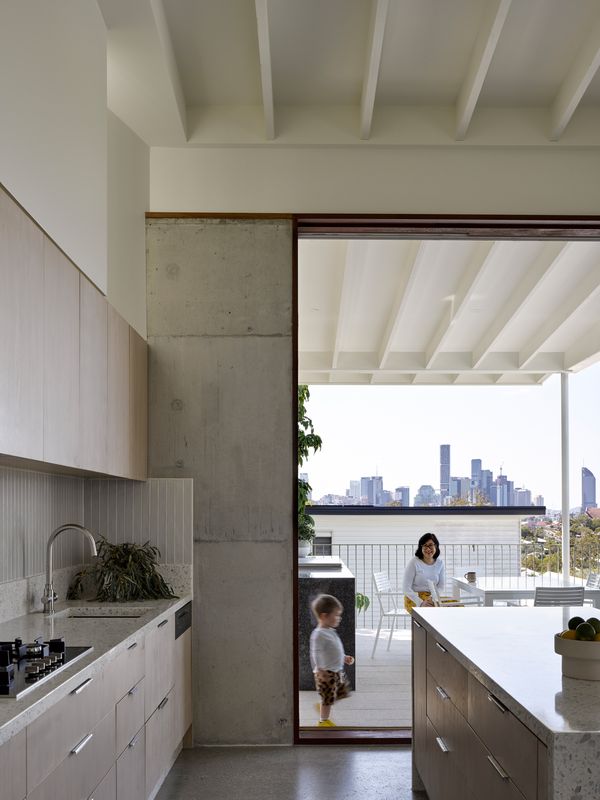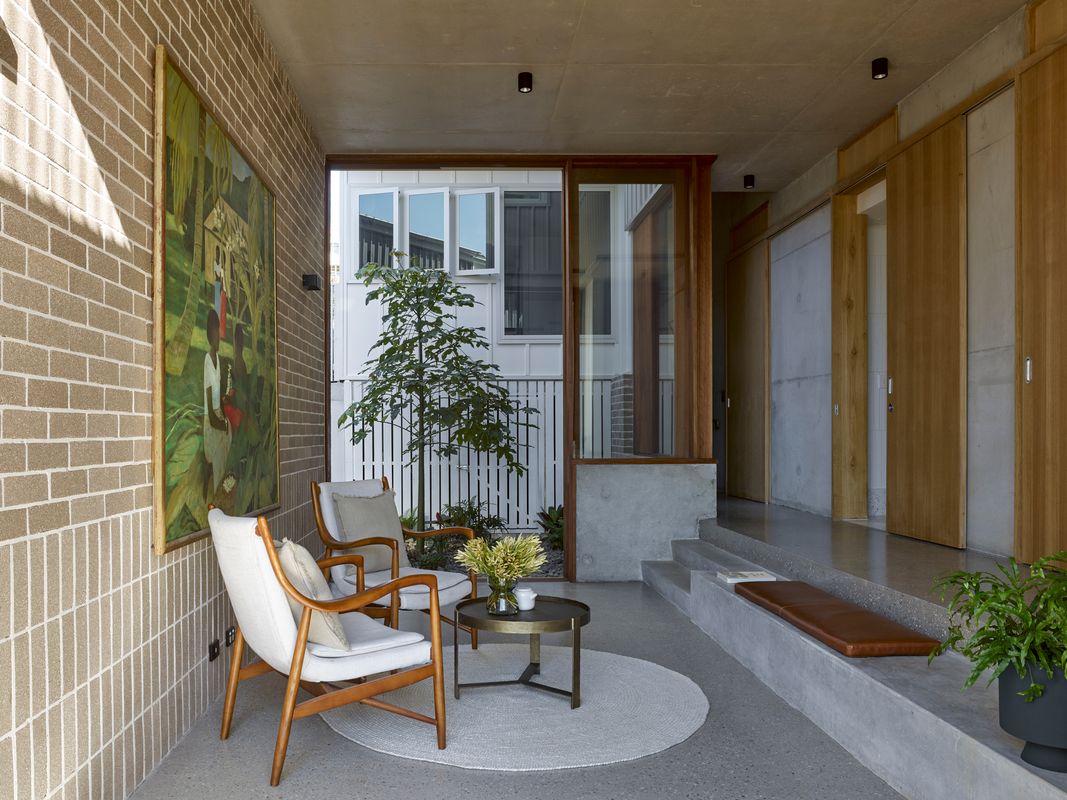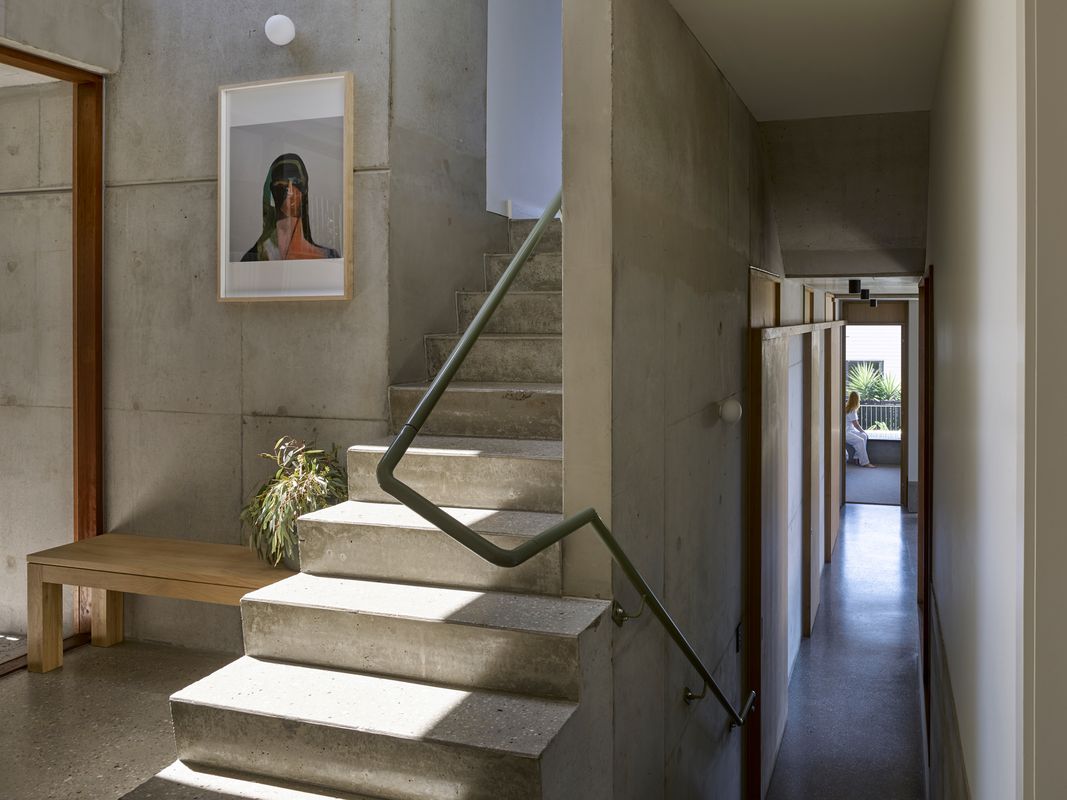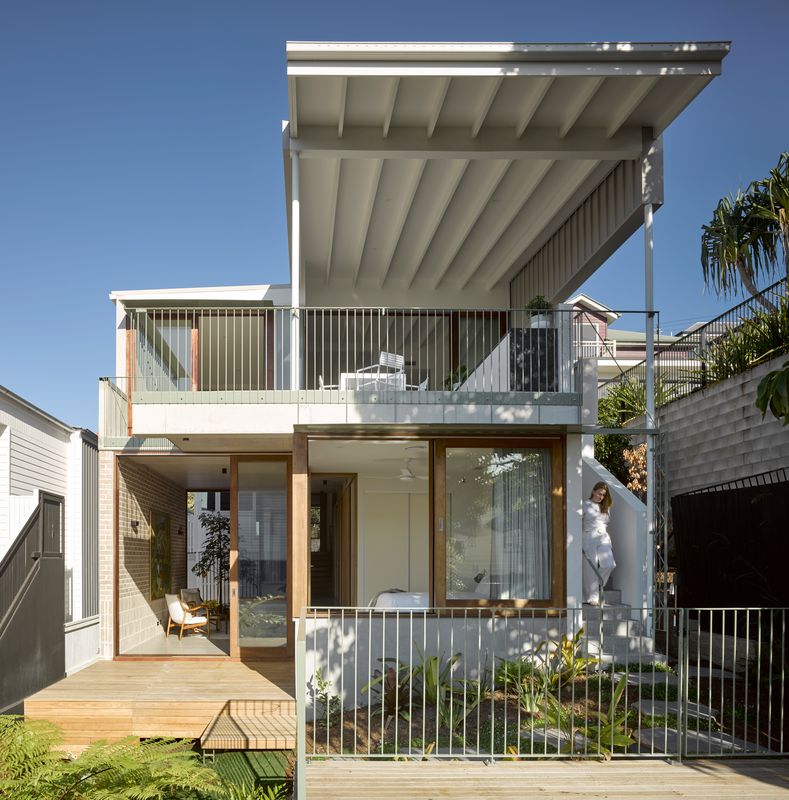Michelle Bailey: What were your early ambitions for this project?
Bobby Coulston: My idea was to find a “renovator” – a side project that would challenge me and that I could sell when it was finished. Because of this, I was looking for the most rundown house on the best possible street in Paddington, with city views. These types of houses are typically very hard to come by, so I was lucky to find one. This block had a lot of building constraints: a steep street, a sloping block and no side access, which turned a lot of buyers off and enabled me to purchase the site before auction.
MB: You work in the building industry and you know a lot about design and construction. Why did you decide to use an architect?
BC: My experience is in the commercial and multiresidential sectors; my knowledge of single dwelling design is limited. I knew the market I would be selling to would expect the highest quality product, so I wanted to get a good architect on board to add value to the project.
Concrete and understated finishes feature throughout the house.
Image: Christopher Frederick Jones
MB: How did you connect with Twohill and James?
BC: My cousins and business partner had previously done work for them on Harvey’s Bar and Bistro and we had also worked with David Twohill on renovations to his own home. I was familiar with the practice’s ethos and process, and I liked that they were emerging architects. I thought, if this project was a success, we could forge a long-term partnership.
MB: What was it about your first meeting with Twohill and James that reassured you that you would work well together?
BC: Our first meeting went really well. We caught up for a coffee and talked about the house and what I wanted to build. I had some budget requirements and certain design parameters I wanted to work with. I was reassured because David and Emma took my comments on board and were very relaxed about my requirements. I felt like we were on the same page and they were happy to collaborate with me.
The home’s off-form concrete walls and in-situ terrazzo floors are a source of pride for owner-builder Bobby Coulston.
Image: Christopher Frederick Jones
MB: What delights you most about the design?
BC: The design pays homage to the old cottage, yet the extension has a modern feel. The house flows well and is really livable and well-suited to the Queensland climate. I love the high ceilings, the honed concrete and the beautifully understated finishes. David gave me some good advice in the beginning: to build something to my taste and trust that someone else would appreciate it for what it is. I love concrete and understand the value in it as a material. I know it’s not everyone’s cup of tea, but people immediately recognize that it feels special.
MB: What are you most proud of?
BC: I am proud of the whole house, to be honest: the off-form concrete, the big timber windows and doors, the in-situ terrazzo floors, the heritage component of the old cottage and even the grasscrete in the driveway! I’ve learned a lot from this project.
Bobby Coulston’s favourite aspects of the design of Paddington House is that it pays homage to the old cottage yet has a modern feel.
Image: Christopher Frederick Jones
MB: What elements of the design would you never have imagined had you not worked with an architect?
BC: I would never have imagined doing the pitched roof with the exposed rafters, which are about twenty metres long, nor the garden room.
MB: How did the design challenge you as a builder?
BC: The design drawings were good to build from. It was the limited site access that made building the project so challenging. I had to dig four hundred cubic metres of dirt with a three-tonne excavator. We had to shift and raise the existing house by five metres and then tie back into it with the new concrete structure. The roof sheets for the pitched roof, which were about twenty metres long, had to be carried in by hand by about twelve men because I couldn’t use a mobile crane. It was challenging but achievable; we did it in less than six months.
The garden room was an unexpected design element from architects Twohill and James.
Image: Christopher Frederick Jones
MB: Do you think working with an architect has improved the value of the end product?
BC: Definitely. The architectural input has dramatically improved the real value of the project. The house has a real point of difference; you won’t find another one like it in Paddington, certainly not one that works so well to resolve so many site challenges. We’ve had a lot of interest and will likely have a contract signed in the next week.
MB: Would you work with an architect again? How did Twohill and James improve the experience for you as an owner and builder?
BC: I would love to. I’m hoping it will be on my own house so that I can design and build exactly what I want and not have to cater for the sales market! What impressed me with Twohill and James was that if I thought something wasn’t working, they would find the solution. They thought not just about the artistic side of the building but also the practicalities.
Read more in Michelle Bailey’s review of Paddington House by Twohill and James.
Products and materials
- Roofing
- Lysaght Custom Orb roof sheeting in Colorbond ‘Dune’
- External walls
- Bowral Bricks in ‘Simmental Silver’; James Hardie fibre cement sheeting
- Internal walls
- CSR plasterboard; concrete
- Windows and doors
- Custom windows and doors by North Coast Joinery; Viridian Low E glazing
- Flooring
- Polished concrete; site-poured terrazzo floors
- Lighting
- Flos Mini Glo-Ball from Euroluce; Brightgreen downlights; Beacon lighting LEDlux downlights
- Kitchen
- Site-poured terrazzo benchtops; stained American oak cabinetry by City Joinery; Miele Pureline oven and microwave; Miele cooktop, rangehood and semi-integrated dishwasher; Fisher and Paykel French door fridge; Franke undermount bowl sink and Sussex Taps Scala sink mixer from Reece
- Bathroom
- National Tiles Aria Snow Gloss wall tiles; site-poured terrazzo floors
Credits
- Project
- Paddington House by Twohill and James
- Architect
- Twohill and James
Brisbane, Qld, Australia
- Project Team
- David Twohill, Emma James, Matthew Hawke, Hannah Byrne, Cleo Ganis, Sophie Benn, Billy McQueenie
- Consultants
-
Builder
Evolution Builders
Engineer Vector Structural Engineering
Landscape architect Dan Young Landscape Architect
- Aboriginal Nation
- Paddington House is built on the land of the Turrbal and Yuggera nations
- Site Details
-
Location
Paddington,
Brisbane,
Qld,
Australia
Site type Suburban
Site area 405 m2
Building area 350 m2
- Project Details
-
Status
Built
Completion date 2019
Design, documentation 6 months
Construction 12 months
Category Residential
Type Alts and adds
Source
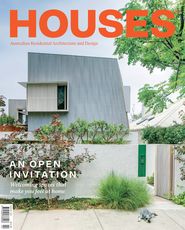
People
Published online: 23 Jul 2021
Words:
Michelle Bailey
Images:
Christopher Frederick Jones
Issue
Houses, April 2020

